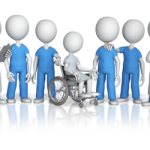After Unwanted Outcome, What Should We Do About People Whom Feel Responsible?
 As Human Performance practitioners we are generally insulated from the negative affects when someone makes a significant mistake. As an example, let's say Joe is working in the Turbine Building and drops a wrench that falls through steel grating two floors below, which hits a colleague and does so much damage that they are hospitalized for a long time. We would have to assume that an investigation would initiate and Joe would get some discipline because of his mistake. We can assume that the injured person would be getting a lot of positive attention and support, but what about the emotional state of Joe? Maybe the leadership team addresses this, but most likely, Joe's emotional state will not be considered (maybe by a concerned person, but not by process). So this begs the question, how should this be addressed?
As Human Performance practitioners we are generally insulated from the negative affects when someone makes a significant mistake. As an example, let's say Joe is working in the Turbine Building and drops a wrench that falls through steel grating two floors below, which hits a colleague and does so much damage that they are hospitalized for a long time. We would have to assume that an investigation would initiate and Joe would get some discipline because of his mistake. We can assume that the injured person would be getting a lot of positive attention and support, but what about the emotional state of Joe? Maybe the leadership team addresses this, but most likely, Joe's emotional state will not be considered (maybe by a concerned person, but not by process). So this begs the question, how should this be addressed?
I have to wonder how a worker losing self-confidence, or confidence in their equipment, relates to the medical field's description of a real human issue coined by Dr. Albert Wu in 2000, "The Second Victim." Have you ever heard that phrase before? I have in passing, but decided this would be a great opportunity to learn more about it.
I started my journey to learn more by watching an awesome video called, "The Second Victim" which is being provided by GE.
Dr. Charles Dunham authored a section of the 2007 Journal of Patient Safety, called "The Second Victim." This research literally spells out a formula for addressing situations and how to handle Joe from the story above. Excerpted from Dr. Dunham's research regarding the rights of caregivers (or for our purposes, Joe), "They may be remembered by the acronym, TRUST (Treatment that is just, Respect, Understanding and compassion, Supportive Care, and Transparency and the opportunity to contribute to learning)."